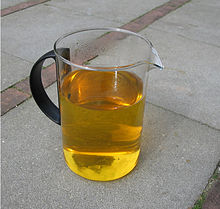The urine is a by-product of the metabolism that happens in your body. This by-product or waste is called urea. It is made when your kidneys filter wastes and extra water from your blood. From the kidneys, urine travels down two thin tubes called ureters to the bladder. The bladder stores urine until you are ready to urinate.
The urine, however, can serve as an indication of your health status. Below are some of the things to look out for next time you urinate:
You’re Dehydrated
The colour in urine is caused by a pigment called urichrome, which gets lighter and darker depending on how concentrated urine becomes. When your urine is dark yellow or amber or honey coloured, it is an indication that you aren’t drinking enough water.
You’re Drinking Too Much Water
While it is good to drink enough water to keep you hydrated, you should also note that drinking too much water can rob your body of electrolytes. When your urine is transparent it is an indication that you are drinking too much water.
You’re Pregnant
One of the quickest ways to check for pregnancy is to test the urine. In the first few weeks of pregnancy, the fetus begins to secrete the hormone human chorionic gonadotropin, or hCG, which is what is detected by home pregnancy tests.
Urinary Tract Infection (UTI)
A urinary tract infection, or UTI, is an infection in any part of the urinary system, which includes the kidneys, bladder, ureters, and urethra.
According to reseach a woman’s chance of getting a urinary tract infection is high. Some experts rank the lifetime risk of women getting one as high as 1 in 2, with many some having repeat infections, sometimes for years. Meanwhile, about 1 in 10 men will get a UTI in their lifetime.
Urine that has a strong ammonia smell or a foul or slightly-sweet scent is often the first indication that you have a UTI. The bacteria causing the infection produce the odour, in addition to making your urine appear cloudy or bloody.
The medical information provided in this article is provided as an information resource only. This information does not create any patient-physician relationship and should not be used as a substitute for professional diagnosis and treatment.
Source: Guardian Newspaper




